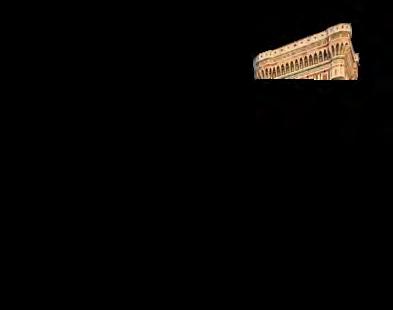
13 minute read
AMID FAITH ART AND HISTORY
LANDMARKS & MUSEUMS ITINERARIES

Advertisement
Universally recognised as one of the locations symbolising the city, the Baptistery of San Giovanni is one of the oldest places of worship in Florence.
>> Battistero di San Giovanni Piazza San Giovanni. www.ilgrandemuseodelduomo.it
Located opposite the complex of Santa Maria del Fiore, the Baptistery owes part of its renown to its octagonal plan structure surmounted by a pyramidal dome and the richly decorated interior of great Renaissance artists. The exterior is famous for its three bronze doors: the South Door, by Andrea Pisano, dating back to 1330, illustrates the life of Saint John the Baptist in 28 inlaid panels, the North Door, by Lorenzo Ghiberti, imagines the life and passion of Christ through 20 panels, and with a further eight, the four evangelists and four “fathers of the church”, while the East Door, (or “Porta del Paradiso”) consists of ten gilded panels representing scenes from the Old Testament.
ITINERARIES
LUCY / SHUTTERSTOCK.COM © PH
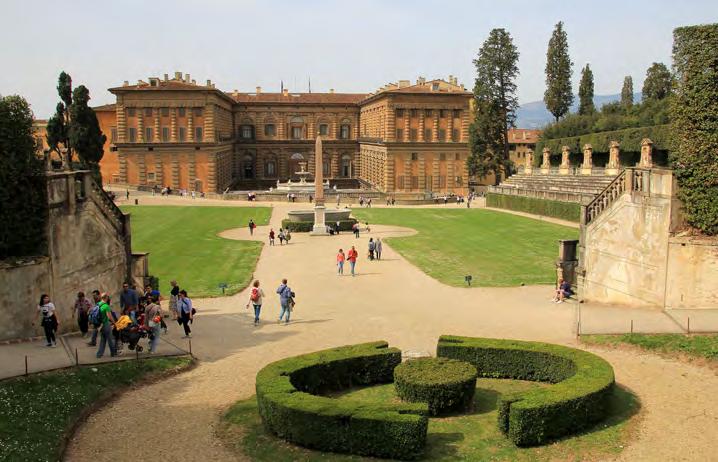
Palazzo Pitti and its dynasties
A palace for three dynasties, Palazzo Pitti is an extraordinary building located in the Oltrarno district, at the foot of ther Boboli Hill. The famous Boboli Gardens, which are the park of the palace, take their name from this hill. Palazzo Pitti contains four different museums: the Treasures of the Grand Dukes (ground flloor and mezzanine) with vases made of semi-precious stones, rock crystals, ambers and ivories and an exceptional collection of Oriental porcelains; the Palatine Gallery and Monumental Apartments (noble floor) with the world’s largest concentration of works by Raphael, the Gallery of Modern Art (second floor) hosting an important group of paintings by the Macchiaioli school; the Musem of Fashion and Costume (Palazzina della Meridiana) with 6,000 items from the 18th century to today. Open Tues-Sun 8.15am-6.50pm. www.uffizi.it/palazzo-pitti. Piazza de’ Pitti, 1.
ITINERARIES
TRABANTOS/SHUTTERSTOCK.COM ©
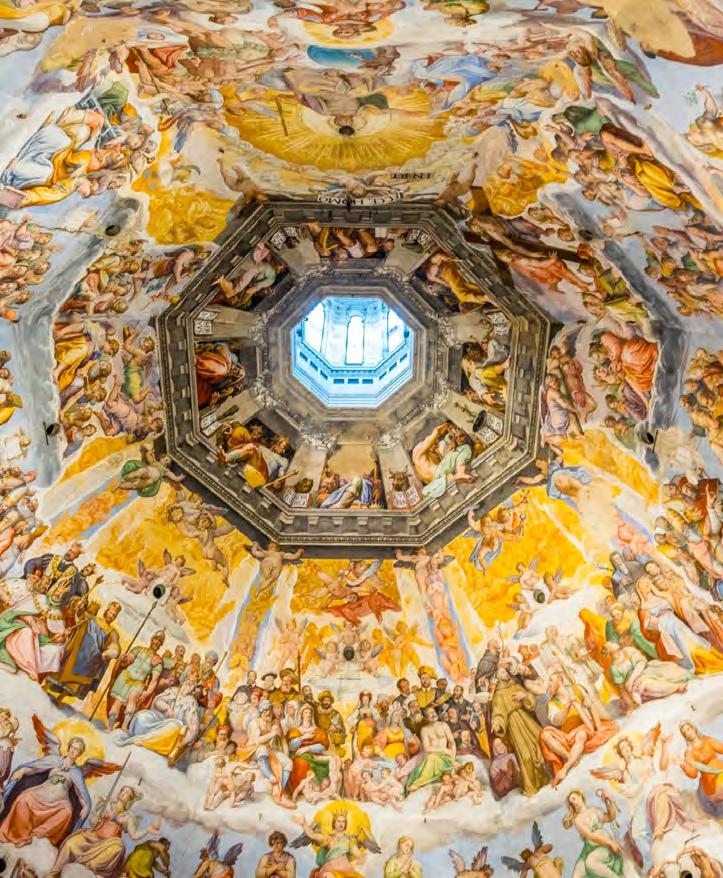
DUOMO
Completed in 1436, at the time the Duomo in Florence was the largest Christian church in the world. Today the religious building, the official name of which is “Cathedral of Santa Maria del Fiore”, is third in terms of dimensions after St. Peter’s in Rome and St. Paul’s Cathedral in London. Brunelleschi’s Dome, still the tallest construction in the city, is a symbol known all over the world.
ITINERARIES
AGNIESZKA LOBODZINSKA/SHUTTERSTOCK.COM ©
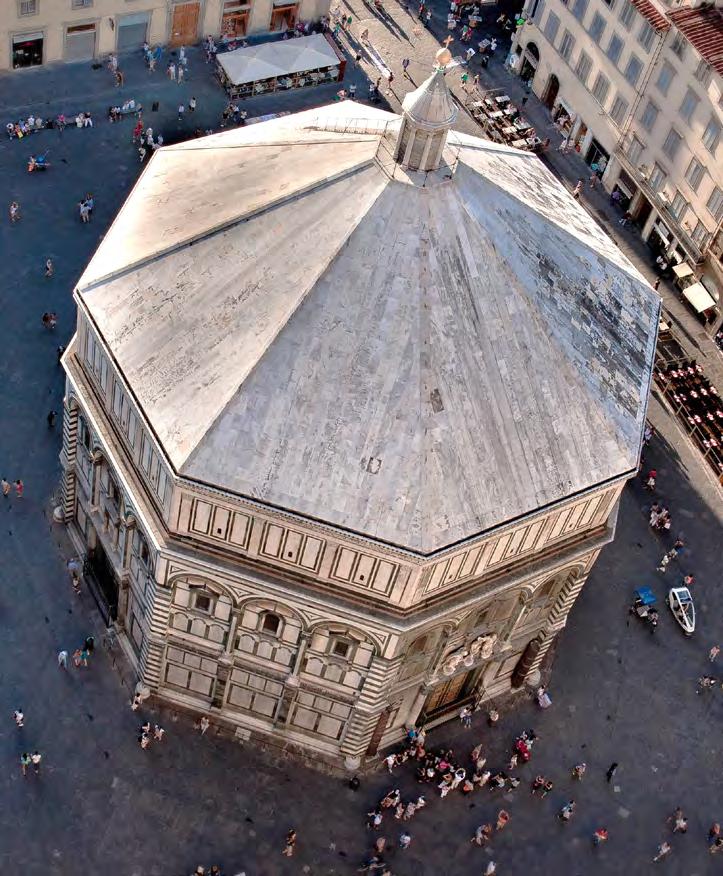
BATTISTERO
The first official dating of the Baptistery of St. John the Baptist is in the 12th century. Located opposite the Cathedral of Santa Maria del Fiore, it is characterised by an octagonal plan, lined with a dome of eight segments, covered by a pyramid roof. The outside is decorated with white marble from Carrara and green marble from Prato, characteristics of the Florentine architecture of the Romanesque period.
ITINERARIES
DINOPH/SHUTTERSTOCK.COM ©
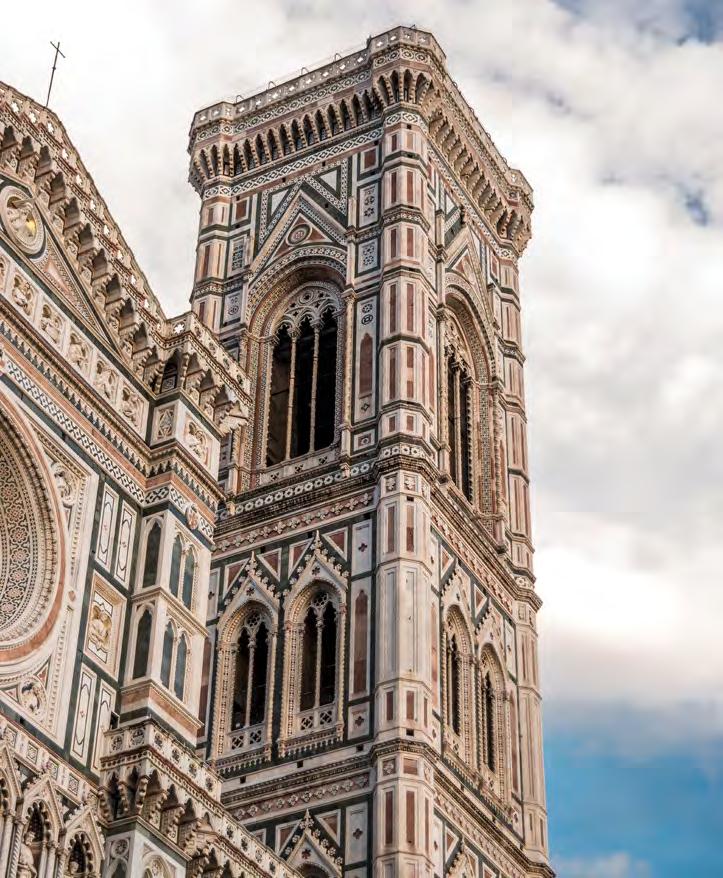
CAMPANILE DI GIOTTO
84.70 metres high and around 15 wide, the Giotto’s bell tower is one of the four main components of the complex of Santa Maria del Fiore. Lined with white, red and green marble, the majestic square-based bell tower, designed by Giotto in 1334, can be visited by climbing no less than 414 stairs up to the top, from where you can enjoy extraordinary views of Brunelleschi’s Dome.
ITINERARIES
GALLERIA DEGLI UFFIZI © PH

GALLERIA DEGLI UFFIZI
One of the most famous museums in the world on account of its extraordinary collections of ancient sculptures and paintings (from the Middle Ages to the modern age). The Gallery occupies the first and second floors of the large building erected between 1560 and 1580 based on a project by Giorgio Vasari.
ITINERARIES

PIAZZA DELLA SIGNORIA
This is the central square of Florence, the seat of civil power and social heart of the city. Facing onto it are Palazzo Vecchio, the splendid Loggia della Signoria, the Tribunale della Mercanzia, Palazzo Uguccioni and Palazzo delle Assicurazioni Generali. Also prominent in the square are the Fountain of Neptune and a series of statues of Renaissance origin, representing an important sculptural cycle.
ITINERARIES
IVAN KURMYSHOV/SHUTTERSTOCK.COM ©

PALAZZO VECCHIO
Located in Piazza della Signoria, today it is the seat of the Municipal Council of Florence. It is the finest synthesis of 14th-century civil architecture and is one of the best known civic buildings in the world. Its imposing façade, abounding in history, the charm of its magnificent courtyards and its precious interiors make it a site visited daily by hundreds of people.
ITINERARIES
VOLKOVA NATALIA/SHUTTERSTOCK.COM ©

PONTE VECCHIO
The official date of foundation of the current Ponte Vecchio is given as 1345. For the entire Middle Ages the bridge hosted greengrocers’, fishmongers’ and butchers’ shops, who used the river to dispose of their waste in a hurry. At the end of the 16th century, however, when it became the “noble” zone of the city, the goldsmiths and jewellers started to arrive, and they have been there uninterruptedly to this day.
ITINERARIES
F11PHOTO/SHUTTERSTOCK.COM ©
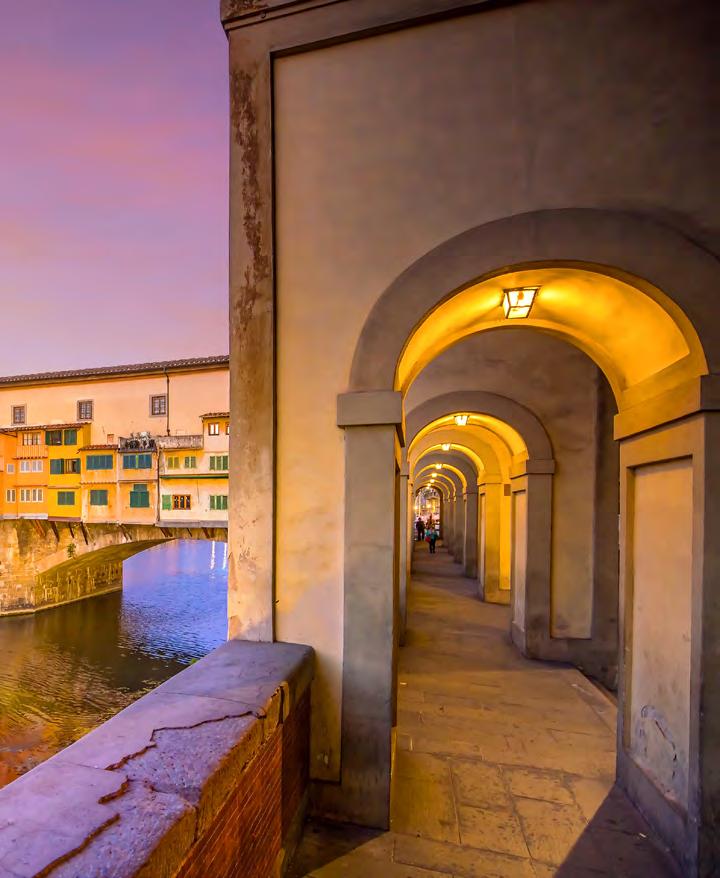
CORRIDOIO VASARIANO
The Vasari Corridor is a raised walkway connecting Ponte Vecchio with Palazzo Pitti. It is a rather narrow passage the entrance to which is at the beginning of the second corridor of the Uffizi Gallery; it then stretches along the Arno, over the Ponte Vecchio, finally arriving at Palazzo Pitti. It was built in 1565 by the great Florentine architect Giorgio Vasari. On display along the Corridor are over 1000 paintings.
ITINERARIES
CATARINA BELOVA/SHUTTERSTOCK.COM ©
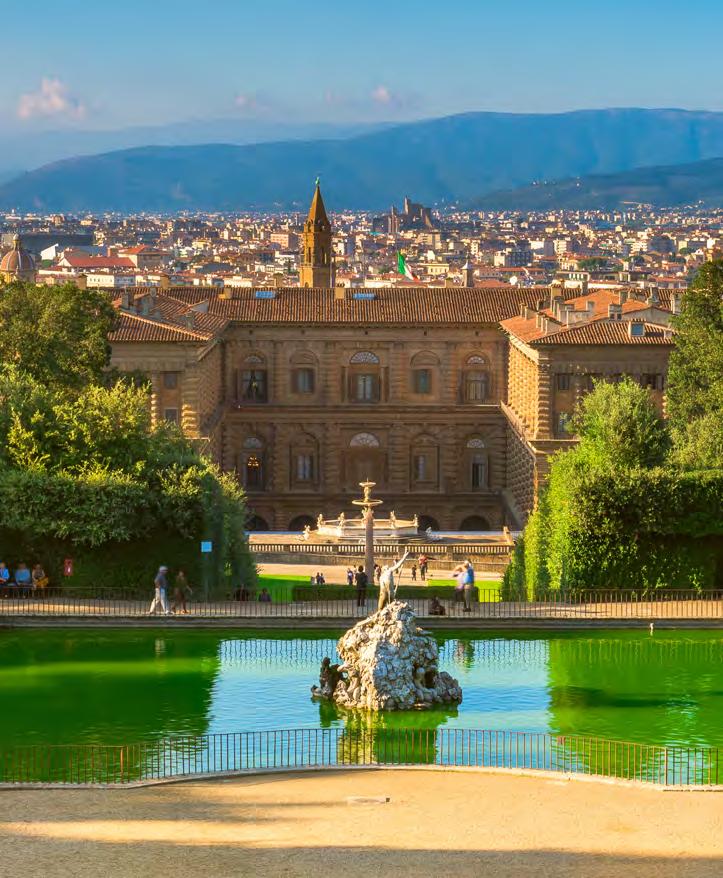
PALAZZO PITTI
The symbol of wealth and power, the building was inhabited by the Medici in the period of their maximum splendour, then by the Habsburg-Lorraines and, after the Unity of Italy, by the Savoy family. The original architecture dates back to the 15th century and “Pitti” is the surname of its first owner. The building is located Oltrarno (on the left bank of the river), at the foot of Boboli Hill.
ITINERARIES
CLEARLENS/SHUTTERSTOCK.COM ©

GIARDINO DI BOBOLI
One of the most important examples of Italian-style gardens in the world and a genuine open-air museum on account of its admirable architectural and landscaped layout. Currently it is connected to Forte di Belvedere and is the site of several museums: the Treasury of the Grand Dukes, the Palatine Gallery and the Royal Apartments, the Gallery of Modern Art and the Museum of Fashion and Costume.
ITINERARIES
TOMASZ KORYL/SHUTTERSTOCK.COM ©

PIAZZALE MICHELANGELO
This is the most famous and appreciated panoramic point in Florence, with its views seen all over the world in million of postcards and reproductions. The design of the square dates back to 1869, when Florence was capital of Italy. Dedicated to the city’s most famous artist, the square has bronze copies of some of Michelangelo’s most famous sculptures.
ITINERARIES
V_E/SHUTTERSTOCK.COM ©
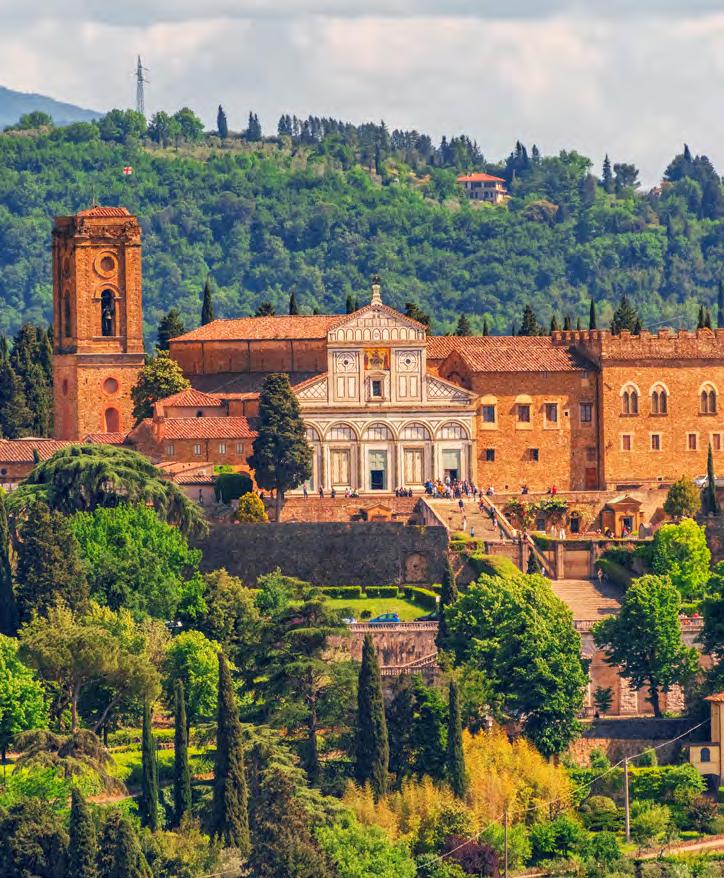
SAN MINIATO AL MONTE
The Abbey of San Miniato al Monte is a medieval religious building situated at one of the highest panoramic points in Florence. The most spectacular access is gained via the monumental flight of steps. The outside of the church is decorated with green and white marble, typical of Florentine Romanesque, while the interior boasts one of the city’s best conserved original floors.
ITINERARIES
TRUBA7113 / SHUTTERSTOCK.COM ©

SANTA CROCE
One of the “great basilicas” in Florence, a point of reference of the Franciscan order. Giotto painted some of his great masterpieces here and the French writer Stendhal experienced that profound artistic agitation that has been known since then as the “Stendhal syndrome”. The basilica contains the monumental sepulchres of Michelangelo, Galileo and Machiavelli.
ITINERARIES
LEDMARK/SHUTTERSTOCK.COM ©

SANTA MARIA NOVELLA
Together with Santa Croce, San Lorenzo and Santo Spirito, it is one of the “great basilicas”, a point of reference of the Dominican order. The church, with its elegant façade by Leon Battista Alberti, is a harmonious synthesis of Gothic and Renaissance styles. It hosts exceptional works of art by Masaccio, Giotto, Brunelleschi, Filippino Lippi, Domenico Ghirlandaio and Paolo Uccello.
ITINERARIES

SANTO SPIRITO
Together with Santa Croce, San Lorenzo and Santa Maria Novella, it is one of the “great basilicas”, a point of reference of the Augustinian order. The church has given its name to the entire surrounding neighbourhood, “Borgo Santo Spirito”. A jewel of Renaissance architecture, the church was the last great project by Filippo Brunelleschi.
ITINERARIES
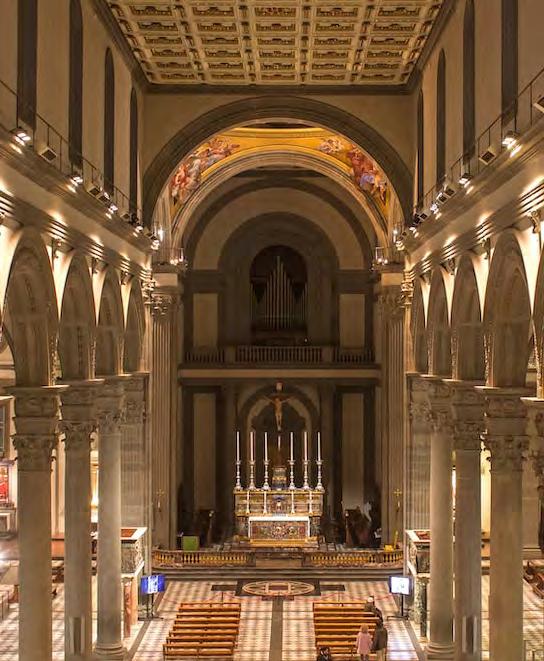
SAN LORENZO
Together with Santa Croce, Santo Spirito and Santa Maria Novella, it is one of the “great basilicas”, founded by Saint Ambrose, in the 4th century AD. Its current appearance, however, is the result of the last major reconstruction work that took place in the 15th century at the wishes of the Medici and under the direction of the great architect Filippo Brunelleschi.
ITINERARIES
FEDERICA DI GIOVANNI ©

MERCATO CENTRALE
Built at the end of the 19th century, the Central Market is a building of a certain architectural merit. The project was entrusted to Giuseppe Mengoni, the architect of the Galleria Vittorio Emanuele in Milan, who was inspired by Les Halles in Paris. Today, a point of reference for informal but good quality cuisine for both Florentines and tourists.
ITINERARIES

MUSEO NOVECENTO
Dedicated to the Italian art of the 20th century, it offers a selection of around 300 works representing that unrepeatable artistic season that saw Florence at the centre of the international cultural scene. The immersive museum itinerary includes multimedia workstations, sound devices and video rooms along with the works themselves.
ITINERARIES

PALAZZO MEDICI RICCARDI
Four centuries of the history of art, architecture and collections in a single building, one of the most beautiful in Florence; built in the mid-15th century by Michelozzo at the wishes of the Medici, it is the prototype of Renaissance civil architecture. Its jewel is the Magi Chapel, which you enter by climbing the elegant seventeenth-century staircase.
ITINERARIES
PIETRO SAVORELLI ©

MUSEO DEGLI INNOCENTI
The Museum is located in the ancient Spedale degli Innocenti, a masterpiece of Renaissance architecture designed by Brunelleschi. The museum itinerary combines the documentary and historical-artistic heritage, and hosts precious artworks by Botticelli, Ghirlandaio, Luca and Andrea della Robbia and many more. On the terrace the elegant Caffè del Verone offers beautiful panoramic views.
ITINERARIES
ANNA PAKUTINA/SHUTTERSTOCK.COM ©
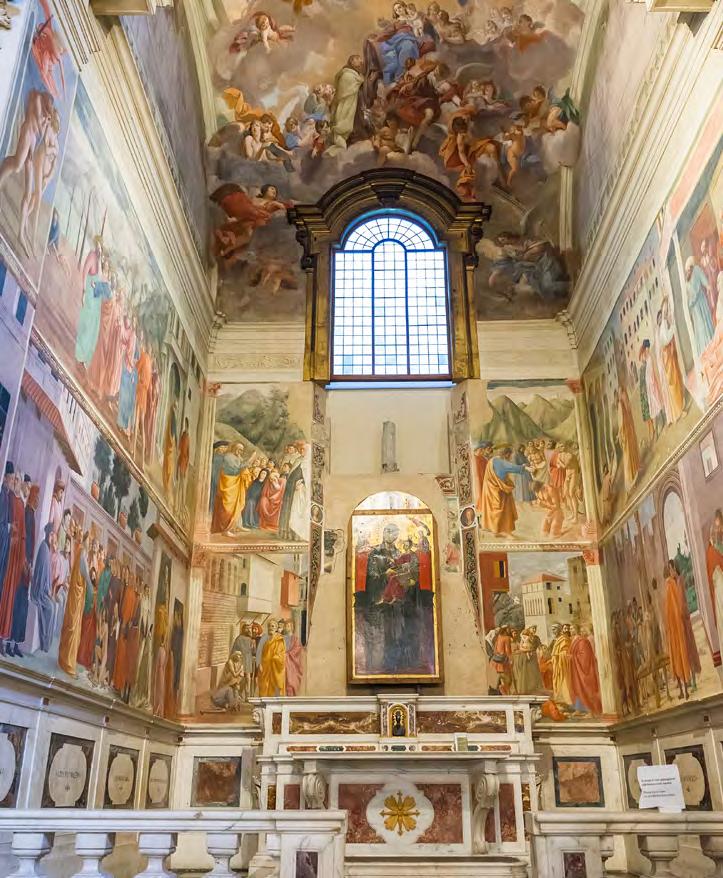
CAPPELLA BRANCACCI
The Church and the Convent of Santa Maria del Carmine, dating back to the mid-13th century, house the Brancacci Chapel, a masterpiece that is universally renowned for the frescos of the cycle of Scenes from the Life of St. Peter by Masaccio and Masolino da Panicale. Executed in 1425-1427, they were left unfinished and were eventually completed by Filippino Lippi between 1481 and 1482.
ITINERARIES
BERNARD BARROSO/SHUTTERSTOCK.COM ©

CAPPELLE MEDICEE
The museum consists of the New Sacristy, designed by Michelangelo, the Chapel of the Princes, a monumental mausoleum built using semi-precious stones, the Crypt, where the Medici Grand Dukes and their relatives are buried, and the Lorenese Crypt, which, in addition to the remains of the Lorena family, contains the funeral monument to Cosimo the Elder, founder of the dynasty.
ITINERARIES
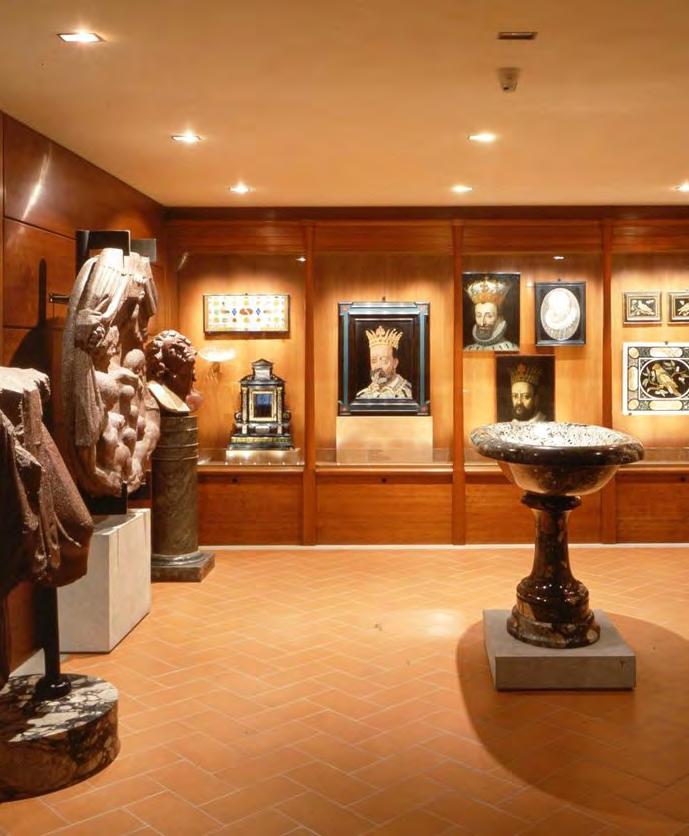
MUSEO DELL’OPIFICIO DELLE PIETRE DURE
An elegant collection of works made of semiprecious stones and multi-coloured marble and scagliola, paintings on stone and oil paintings, instruments, plus an extensive collection of stone samples. The works are displayed in chronological order from the early 17th century to the 1880s.
ITINERARIES
SABINA BERNACCHINI ©
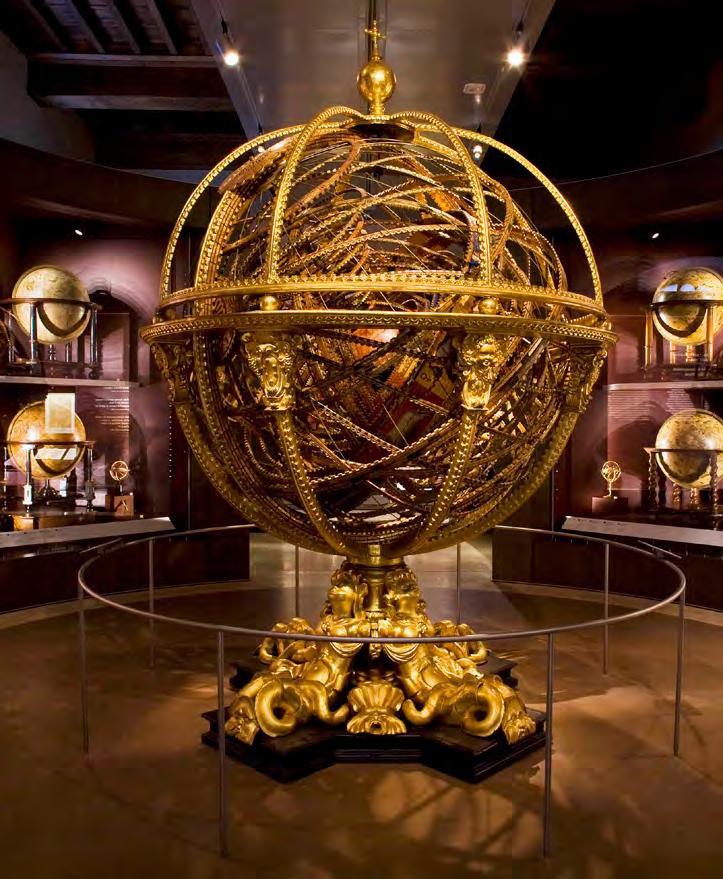
MUSEO GALILEO
Housed in the historic Palazzo Castellani, its unique collections include ancient scientific instruments datable between the 11th and 19th centuries, including all of Galileo Galilei’s original instruments. One group consists of the collection of instruments of the Medici dynasty, the other of the objects subsequently gathered together by the Grand Dukes of Lorraine.
ITINERARIES

FORTE DI BELVEDERE
At the end of the 16th century, Ferdinando de’ Medici commissioned Bernardo Buontalenti to design a fortress on the top of Boboli Hill, to incorporate a villa to be used as a “belvedere” by the Grand Duke’s court. Despite its strategic position, it was never used for defensive purposes; however, a vault was created in the underground floors to house the state treasury. The fort currently hosts top-level events and exhibitions.
ITINERARIES
STEFANO CASATI ©
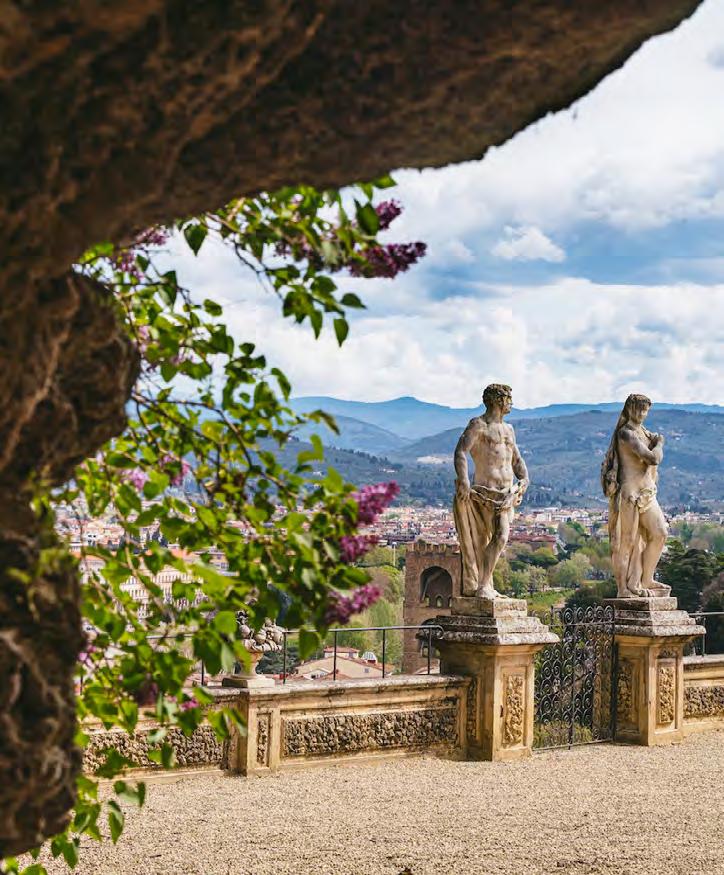
VILLA BARDINI
Today Villa Bardini, a place rich in history, art and culture, has become an exhibition centre, which, along with temporary exhibitions, also hosts the Pietro Annigoni Museum (www. museoannigoni.it), dedicated to the great realist painter, and the Roberto Capucci Museum (www. fondazionerobertocapucci. com). In addition, there is also a Michelin starred restaurant inside it, La Leggenda dei Frati.
ITINERARIES
PICASA ©
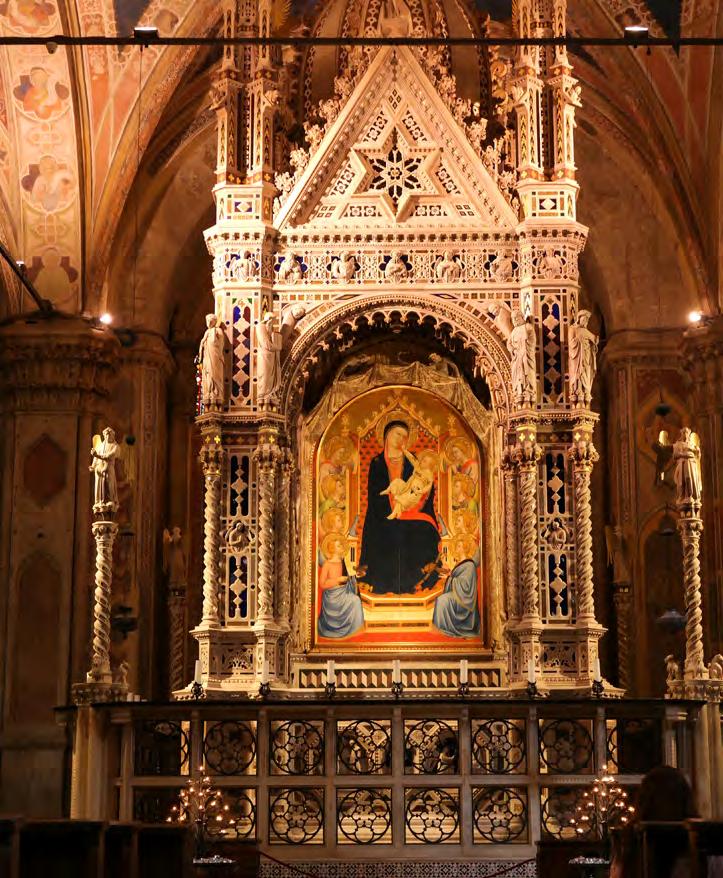
ORSANMICHELE
A unique, extraordinary monument, in which civil and religious functions are combined. Built as a granary, in the mid-14th century it was consecrated for Christian worship. On the ground floor the Church houses a grandiose marble tabernacle by Orcagna. On the second floor you can enjoy a fine panoramic view of Santa Maria del Fiore.
ITINERARIES

MUSEO DEL BARGELLO
The headquarters of two ancient benevolent institutions, the Compagnia della Misericordia and the Compagnia del Bigallo, the so-called Loggia del Bigallo is a complex the construction of which was begun in 1352. A precious record of the history of Florence, the museum conserves wonderful frescos from the 14th century, including the Virgin of Mercy (1342), presenting the first famous view of Florence.
ITINERARIES
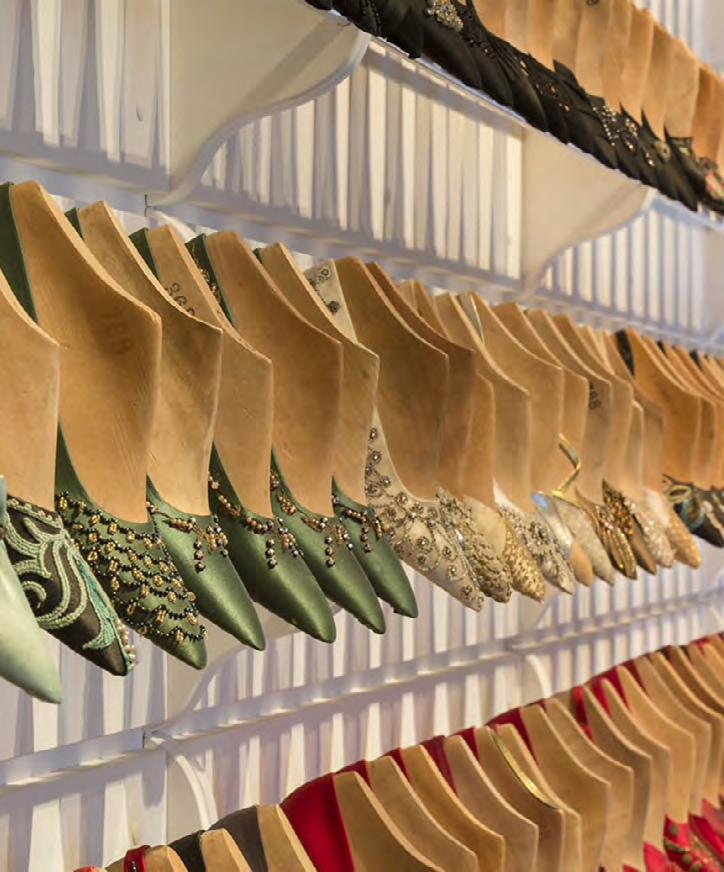
MUSEO SALVATORE FERRAGAMO
This is a museum devoted to the history of the Ferragamo company, to the life of its founder, Salvatore Ferragamo, and to his creations. Every year it organises exhibitions that investigate the relationship between fashion and art. The museum is situated in Palazzo Spini Feroni (1289) and in its rooms it displays masterpieces of Florentine art from the 17th and 18th centuries.
ITINERARIES
SIMONA FOSSI ©
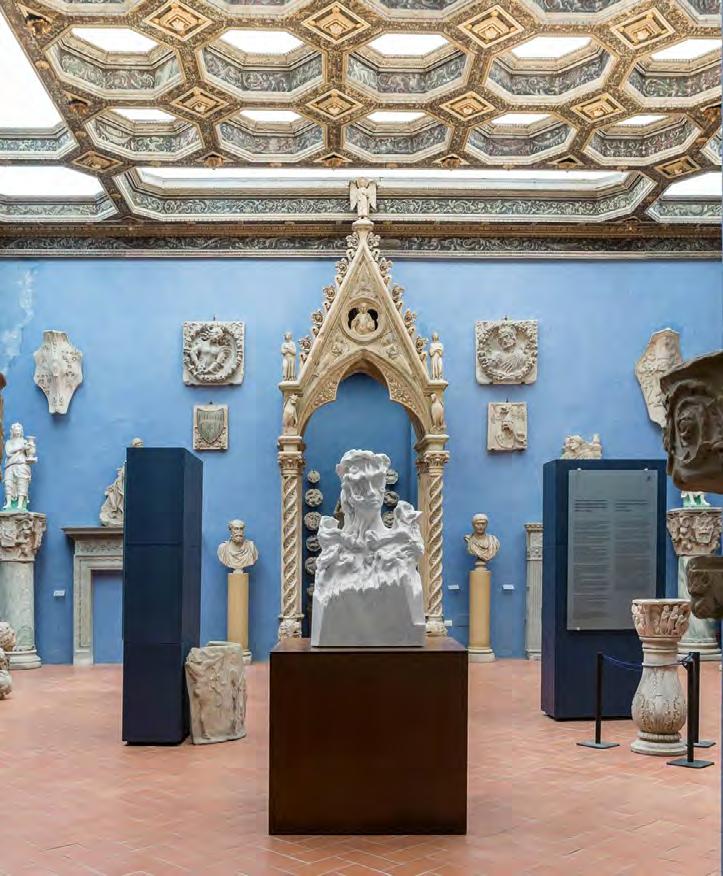
MUSEO STEFANO BARDINI
A connoisseur of art and an unbridled merchant in antiquities, Stefano Bardini (1836-1922) donated his private collection to Florence, where it was displayed in the Neo-Renaissance building that housed his antiquarian gallery. There are over 2000 items there, including sculptures, paintings and objects of applied arts, from ancient art to that of the 18th century.







